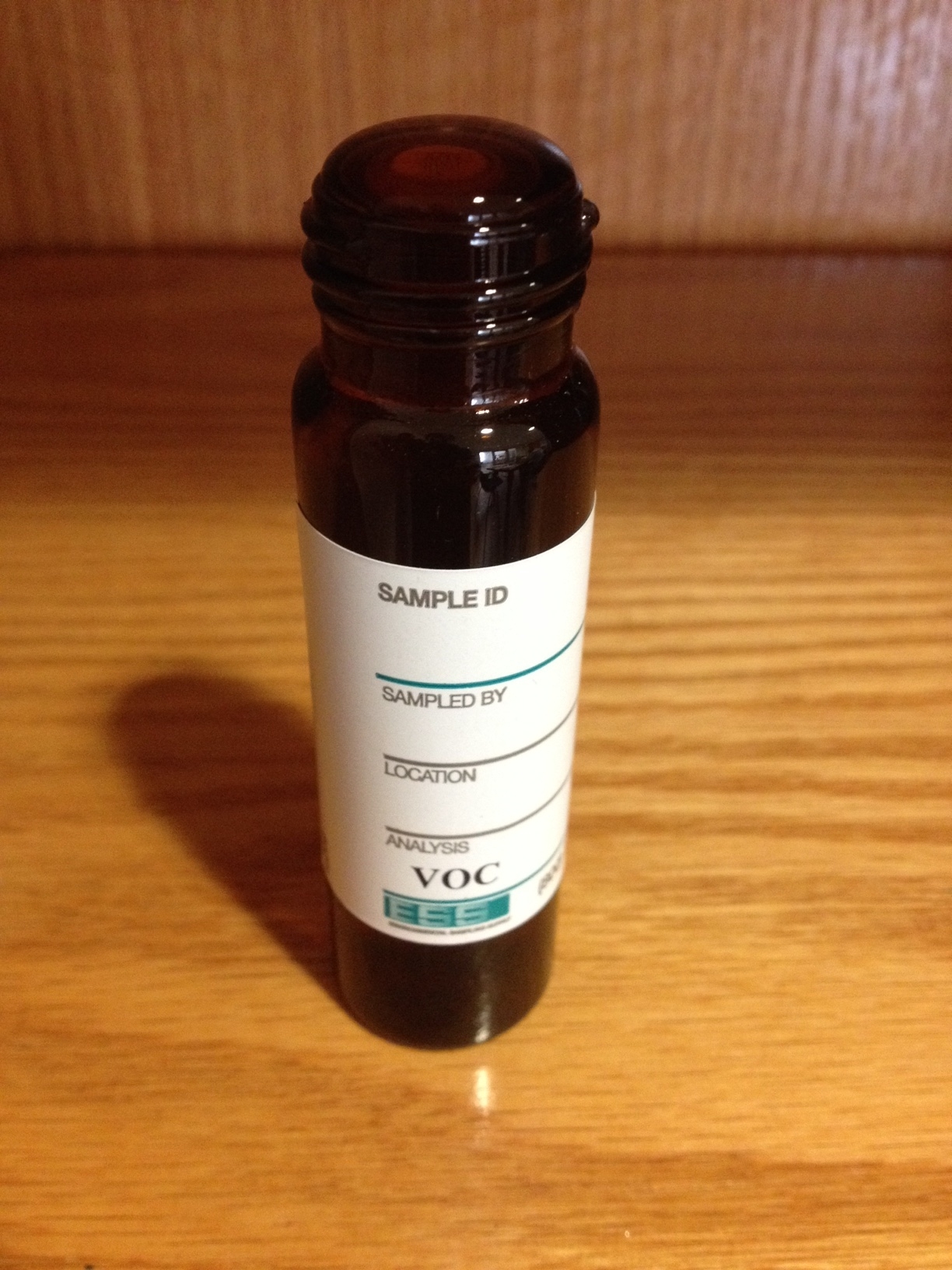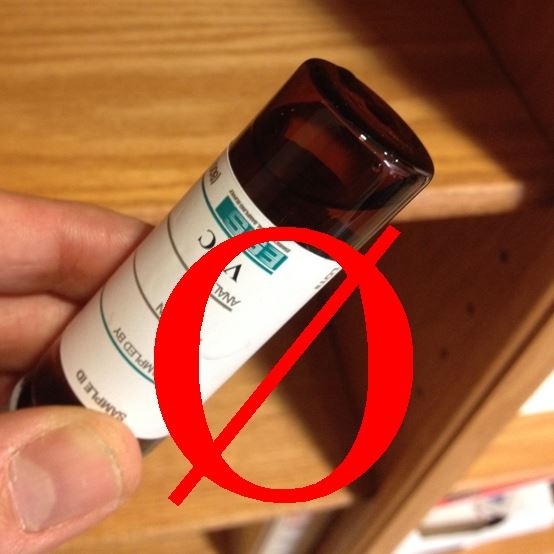Specific sampling instructions are provided below:
CAUTION:
Some sample bottles contain chemical preservatives. These substances may cause injury if spilled in the eyes or on the skin or ingested. In case of a spill, rinse the affected area with large amounts of water and see a doctor immediately. Use of gloves is strongly recommended.
(Click here to view these instructions as a PDF)
View a PFAS sampling video
- Clearly label each sample container. Use a pen to indicate the sampling location and the date and time collected.
- Use the proper container to collect your sample and do not rinse out any preservatives present. Specific sample containers are required for all EPA 533 & 537 analyses. Samples will be rejected if collected in the incorrect container and will require re-sampling. If you have any questions, please contact us before sampling (208-883-2839 [Moscow] or 509-838-3999 [Spokane]).
- Refrigerate samples or place samples on ice immediately after sampling prior to shipping to lab. Samples must be submitted to the lab as soon as possible, preferably within 48 hours of sampling. EPA 533 & 537 protocols have strict preservation and temperature requirements thus samples must arrive at the laboratory cold (<10oC) and in the correct containers or samples will be rejected.
- Before submitting your samples to the lab, complete a chain of custody form for each entry point (EP).
- Contact us with any questions before sampling. Samples will be rejected if improperly submitted.
EPA 533 & 537 require field reagent blanks to be prepared while collecting samples at each sampling site.
EPA 533 & 537: Perfluorinated Alkyl Acids in Drinking Water
- Bottles: 250 mL polypropylene plastic (two bottles for each entry point)
- Fill the bottle under a slow stream of water until the bottle is filled up to the neck. Gently replace the cap, tighten securely, and invert the sample a few times to dissolve the preservative.
- Field Reagent Blanks (required for each entry point):
- You will have one sealed 250 mL plastic bottle that contains preserved, reagent water (labeled Field Blank A) and one plastic bottle that is empty (labeled Field Blank B). At the sampling site, open the bottle containing reagent water and pour it into the empty bottle, replace the cap securely and ship it with the samples.
(Click here to view these instructions as a PDF) (Click here to see video sampling instructions)
Contact us with any questions before sampling. Samples will be rejected if improperly submitted.
- Clearly label each sample container. Use a pen to indicate the sampling location and the date and time collected.
- Use the proper container to collect your sample and do not rinse out any preservatives present. Specific sample containers are required for all UCMR5 analyses. Samples will be rejected if collected in the incorrect container and will require re-sampling. If you have any questions, please contact us before sampling (1-208-883-2839).
- Refrigerate samples or place samples on ice immediately after sampling prior to shipping to lab. Samples must be submitted to the lab within 48 hours of sampling. UCMR5 protocols have strict preservation and temperature requirements thus samples must arrive at the laboratory cold (<10oC) and in the correct containers or samples will be rejected.
- Before submitting your samples to the lab, complete a chain of custody form for each entry point (EP). The additional ‘two bottles per water system’ noted on some tests are collected to allow the laboratory to run matrix spike samples required by UCMR5.
- Contact us with any questions before sampling. Samples will be rejected if improperly submitted.
- EPA 200.7 Lithium in Drinking Water
Bottles: 250 mL HDPE plastic (one bottle for each Entry Point)
Fill the bottle under a slow stream of water until the bottle is filled up to the neck.
- EPA 533 & 537.1: Perfluorinated Alkyl Acids in Drinking Water
EPA 533 & 537.1 require field reagent blanks to be prepared while collecting samples at each sampling site.
Bottles: 250 mL polypropylene plastic (two bottles for each entry point)
- Fill the bottle under a slow stream of water until the bottle is filled up to the neck. Gently replace the cap, tighten securely, and invert the sample a few times to dissolve the preservative.
Field Reagent Blanks (required for each entry point):
- You will have one sealed 250 mL plastic bottle that contains preserved, reagent water (labeled Field Reagent Blank A) and one plastic bottle that is empty (labeled Field Reagent Blank B). At the sampling site, open the bottle containing reagent water and pour it into the empty bottle, replace the cap securely and ship it with the samples.




